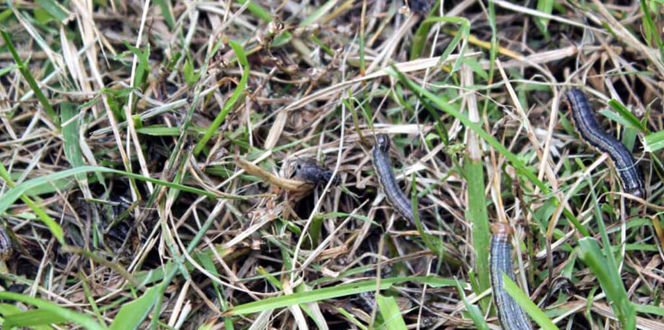Fusarium Blight / Summer Patch Description:
Fusarium blight or summer patch diseases are fungal diseases caused by weak pathogenic fungi that infect turf impacted by adverse environmental or cultural factors.
Hosts:
These common diseases are most often a problem on water-stressed turfgrasses with compacted soils or exposed to drought. Sodded lawns of ‘Merion’ and ‘Bensun’ (A-34), both which are types of turfgrasses, are susceptible, especially if peat-grown sod is laid over heavy clay without providing a transition between the two different soil types. The peat-clay interface prevents proper penetration of water and chemicals, which encourages surface rooting and rapid drying. Seeded lawns rarely have this problem. Aerifying the soil will aid penetration, and the lawn should be watered thoroughly during dry periods.
Fusarium Blight Signs & Symptoms:
Conditions that favor disease development include:
- Dry, exposed turf grass, particularly on southern exposures or near paved areas subject to heat and drought
- Excess thatch
- Compacted soil
- High temperatures (80° – 95° F) and high humidity
- Excess soluble nitrogen during summer months
- Pure stands of susceptible turfgrass, particularly sodded lawns
Symptoms include:
- Small, circular, scattered light green patches of turf that turn reddish-brown first and light tan in late spring to early fall
- “Frog-eye” patterns in turf of healthy green grass, surrounded by a border of dead, reddish-brown grass
- Lesions on grass blades that begin as light green blotches and later turn straw-colored with uneven brown borders and streaks of brown
Management:
Fungicides may be used, but will have little impact on managing Fusarium blight or summer patch if good cultural practices are not used. Because these fungi attack weakened turf, maintaining the health and vigor of turf will help prevent diseases.
Good cultural practices include:
- Keeping turf growth vigorous, but avoiding rapid succulent growth in summer
- Aerifying compacted soils
- Not mowing when turf is wet
- Removing excess thatch
- Mowing frequently at the recommended height or slightly higher
- Seeding or sodding with disease-resistant turf cultivars
- Watering thoroughly during dry or drought periods





